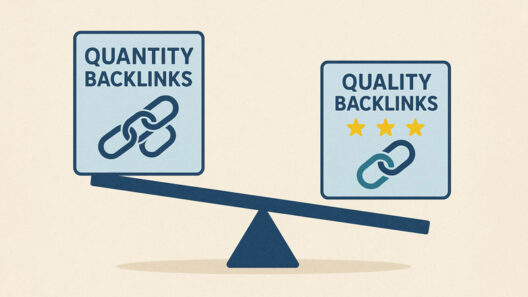If you’re serious about SEO, you already know that keyword research is the foundation of every successful strategy. But with hundreds or even thousands of keywords to target, how do you organize them effectively for content creation and better rankings?
That’s where keyword clustering comes in, a data-driven way to group similar keywords and build powerful topic-focused content.
In this guide, we’ll break down how to do keyword clustering step by step, explain why it’s crucial for SEO, and show you how to do it using free tools. So you can rank smarter, not harder.
What is Keyword Clustering?
Keyword clustering is the process of grouping a set of related keywords based on search intent and topic similarity. Instead of targeting single keywords with individual pages, clustering helps you create content that ranks for multiple keywords under one main topic.
For example:
If your target keyword is “SEO tools”, your cluster might include:
- Best free SEO tools
- Keyword research tools
- SEO audit tools
- On-page SEO tools
Each of these keywords shares a similar intent – finding SEO tools. So you can create one in-depth guide that ranks for all of them.
Why Keyword Clustering Matters for SEO
- Boosts Rankings for Multiple Keywords: Instead of competing for one keyword, a well-structured cluster helps you rank for dozens of related terms within a single piece of content.
- Improves Topical Authority: Search engines like Google reward websites that cover a topic comprehensively. Keyword clustering signals that your content is well-rounded and authoritative.
- Enhances Internal Linking: When you cluster keywords, you can interlink related pages strategically, improving site structure and user navigation.
- Aligns Content with Search Intent: Grouping keywords helps you understand user intent better and ensures your content satisfies what people are actually searching for.
- Reduces Keyword Cannibalization: Clustering ensures you don’t create multiple pages targeting the same intent, preventing your own pages from competing against each other.
Step-by-Step: How to Do Keyword Clustering
Let’s go through how to perform keyword clustering from research to execution.
Step 1: Gather All Your Keywords
Start with a keyword list from your favorite research tools like:
- Google Keyword Planner
- Ahrefs (Free Keyword Generator)
- Ubersuggest
- AnswerThePublic
- Google Search Console (for your existing site)
Export all your keywords into a spreadsheet (CSV or Excel).
Your goal: Collect as many relevant keywords as possible around your main topic.
Learn more about keyword research for SEO.
Step 2: Clean and Organize Your Data
Before clustering, remove:
- Duplicates
- Irrelevant or branded keywords (unless needed)
- Keywords with extremely low search intent or unrelated topics
Keep columns for:
- Keyword
- Search Volume
- Keyword Difficulty (if available)
- Intent (Informational, Navigational, Transactional, or Commercial)
This step ensures your data is clean and easy to work with.
Step 3: Identify Keyword Similarity
Now, find which keywords are semantically similar, meaning they have the same or very close intent.
Example cluster:
- how to do keyword research
- steps to research keywords
- keyword research process
These all belong in one group because users searching these phrases want the same type of content.
Step 4: Use Free Tools for Keyword Clustering
Here are a few free tools that make keyword clustering effortless:
1. Keyword Clarity (Free Online Tool)
Upload your list of keywords and the tool automatically groups them based on Google SERP similarity.
Pros: Accurate intent-based grouping.
Best For: Beginners who want quick clusters.
2. Keyword Cupid (Free Plan)
Keyword Cupid uses machine learning to cluster keywords by analyzing SERP overlap.
Pros: AI-driven clustering with clear visual maps.
Best For: Visualizing keyword relationships.
3. Google Sheets + ChatGPT (Free DIY Method)
You can cluster manually using formulas and AI.
Steps:
- Paste all keywords in Google Sheets.
- Use ChatGPT to group them by intent (e.g., “Group these keywords by search intent”).
- Refine manually based on semantic similarity.
Best For: Full control and custom grouping.
4. SERP Overlap Method (Manual, Free)
If you prefer full manual control, use Google search.
- Search two keywords.
- If the top 5–10 results are similar, they belong in the same cluster.
This method is time-consuming but precise.
Step 5: Label and Name Each Cluster
Once your clusters are ready, name each group based on the main keyword (highest search volume or most representative).
Example:
| Cluster Name | Keywords Included |
|---|---|
| Keyword Research | how to do keyword research, free keyword research tools, keyword research for beginners |
| Keyword Clustering | keyword clustering tools, free keyword clustering methods, how to cluster keywords |
This organization helps when creating topic-based content or pillar pages.
Step 6: Create Pillar and Cluster Pages
Now, turn your clusters into content assets:
- Pillar Page: Broad content targeting the main keyword.
- Cluster Pages: Supporting content covering subtopics or long-tail variations.
For example:
- Pillar Page: Keyword Research Ultimate Guide
- Cluster Pages: Free Keyword Research Tools, Keyword Clustering Guide, How to Analyze Search Intent
Link cluster pages back to the pillar page and vice versa using contextual internal links.
Bonus: Pro Tips for Better Keyword Clustering
- Focus on Intent, Not Just Keywords: Google’s algorithm is smarter than ever. It prioritizes search intent. Group keywords based on why users search, not just what they type.
- Target Long-Tail Variations: Including long-tail keywords in each cluster helps capture low-competition opportunities that bring consistent traffic.
- Leverage Your Existing Data: Use your Google Search Console to see which queries already drive impressions, then expand clusters around those.
- Update Clusters Regularly: Search trends change. Revisit and refine clusters every few months to keep your content aligned with current SERPs.
Best Free Tools Summary
| Tool | Use Case | Cost |
|---|---|---|
| Google Keyword Planner | Keyword Research | Free |
| Keyword Clarity | Auto Keyword Clustering | Free |
| Keyword Cupid | Visual Clustering (AI-based) | Free plan |
| Google Sheets + ChatGPT | Manual Custom Clustering | Free |
| AnswerThePublic | Idea Expansion | Free |
Conclusion
Keyword clustering is one of the smartest ways to level up your SEO strategy without needing premium tools. By grouping keywords by intent, you can build topic-focused content that ranks higher, attracts the right audience, and strengthens your site’s topical authority.
Start with free tools, follow the steps above, and you’ll quickly turn chaotic keyword lists into powerful content clusters that dominate Google’s SERP 1.





